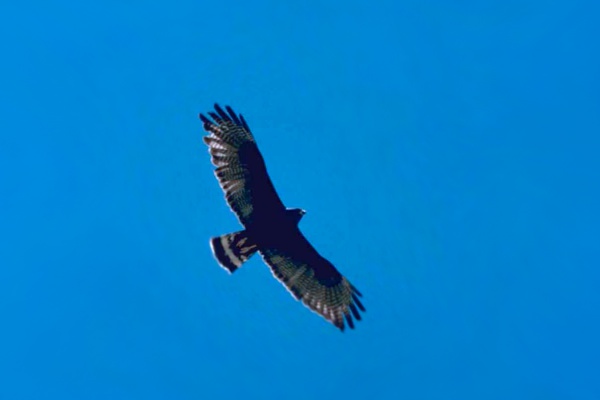Facts About Zone-tailed hawk
The zone-tailed hawk is a captivating bird of prey found in the warmer, arid regions of the Americas. This hawk has a unique strategy: by mimicking the appearance and flight style of the turkey vulture, it often blends seamlessly into flocks of vultures, making it easier to ambush its prey. Its diet primarily consists of small terrestrial animals, and its range extends from parts of the United States all the way down to Argentina.
These hawks exhibit remarkable adaptability regarding their habitats. They can be observed in rocky areas, forests, marshes, and even semi-desert regions. Nests are typically built in tree thickets, and they can occupy various elevations within their range.
In terms of physical characteristics, the zone-tailed hawk is a slender member of the Buteo family, boasting a wingspan of 117 to 140 cm and a length of 46 to 56 cm. Adult hawks are predominantly blackish with striking white bands on their tails. During the breeding season, their loud, screaming call can be distinctly heard.
Behaviorally, these hawks glide with their wings held in a V-shape, closely resembling the flight pattern of turkey vultures. They are active hunters, pursuing small birds, mammals, reptiles, and even juvenile birds. Typically, they hunt by flying low over the terrain, either in a straight path or by systematically quartering the area. Most hunts are conducted solo.
The breeding season of zone-tailed hawks varies depending on their geographic location. Their courtship displays are impressive, featuring aerial loops and dives. They construct bulky nests from sticks, lined with green leaves, and place them high in trees or occasionally on cliffs. A typical clutch contains one to three eggs, with an incubation period of approximately 28 to 35 days. The chicks are semi-altricial, indicating they are somewhat capable at birth but still require significant parental care. They fledge at about 42 to 50 days old but remain under their parents' supervision until the next breeding season. Unfortunately, little is known about their longevity and mortality rates.

 Nicaragua
Nicaragua